The Hobbit: An Unexpected Journey - A Review
Thanks to the meddling wizard Gandalf, Bilbo Baggins, a hobbit from the Shire, finds himself swept up in an adventure. He embarks on a journey with a small company of dwarves (“13 not the best and not the brightest”), whose goal is to reclaim their treasure and homeland, seized by the dragon Smaug. Meanwhile, evil stirs once more in Middle-earth…
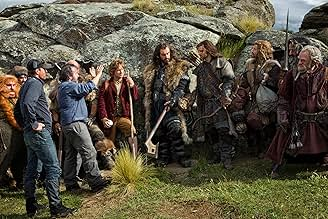
“Every good story deserves embellishment,” says Gandalf the Grey (Ian McKellen) to Bilbo (Martin Freeman) before the hobbit must leave his cozy leather armchair in Bag End and set off on his Unexpected Journey. This phrase, which concludes the tale of Bilbo’s ancestor, Old Took, who supposedly knocked a goblin’s head off and invented golf in the process, is no accident. “The Hobbit” is a good story, and embellishments and exaggerations, whether some like it or not, are an integral part of the film adaptation by Peter Jackson, Fran Walsh, Philippa Boyens, and Guillermo del Toro. This is evident both in the structure of the narrative itself (“An Unexpected Journey” is now not the first part of two, but the beginning of a trilogy) and on the screen: the events that took place in sunny Middle-earth 60 years before “The Lord of the Rings” were filmed digitally at twice the frame rate used in the preceding saga about the difficult autumn of the fairytale kingdom.
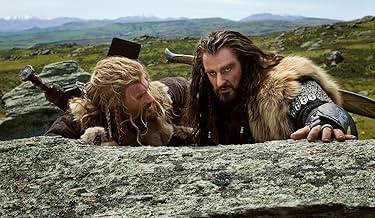
Concerns and Expansions
This immediately raises concerns that “The Hobbit” from Jackson and company, unlike “The Lord of the Rings,” for which the vast historical fantasy epic had to be shortened, will be a painfully bloated version of a slim book from the realm of bedtime stories. Jackson’s team goes far beyond the original storyline, which, despite the fact that the action develops faster than in “The Lord of the Rings…”, is replete with details and all sorts of coincidences. The filmmakers embrace the entire Tolkien universe, openly interpreting “The Hobbit” as a prequel, a foreboding of the future appearance of Sauron the Deceiver in Middle-earth.
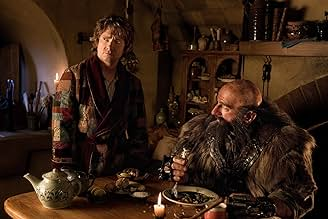
Side Quests and Foreshadowing
And yet, insertions like the one in which the wizard-naturalist Radagast the Brown (Sylvester McCoy), with a face smeared with bird droppings and bulging eyes, sets off to the ruins of a creepy fortress in a rabbit-drawn sleigh, are not directly related to the main plot. Except for the episode in which Gandalf expresses his concerns to the skeptical Saruman (Christopher Lee) that the dragon Smaug, who has appropriated the dwarves’ gold reserves, could be used by the “enemy” as a fire-breathing weapon of mass destruction, the storylines concerning the White Council, the Necromancer, and the aforementioned fortress of Dol Guldur (all closely related to “The Hobbit’s” function as a prequel) are not yet very consistent with Bilbo’s relatively modest adventure. Although the hobbit finds the One Ring, the fact that it is related to Sauron is, at this particular moment, only known to us and the orchestra conducted by Howard Shore (especially its string section).
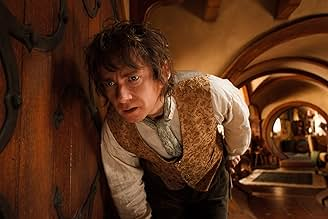
Action and Character Development
Nevertheless, the journey, whose ultimate goal, as usual, is a mountain – this time the Lonely Mountain, not Mount Doom – is filmed intelligently. The action develops quickly, and the main antagonist Azog (Manu Bennett), an albino and leader of the orcs, who is only mentioned in passing in the book, is introduced into the plot. Here, he hunts the “dwarvish scum” from the very beginning, and this gives the quest the frantic fury of chase films. The book’s signature scenes have been thoughtfully reworked, so don’t expect the troll scene to be exactly the same as in Tolkien. New episodes have also been added, such as the skirmish with the warg-riding orcs on the border of Rivendell. The sabotage in the goblin city is filmed in a purely Jacksonian style. However, such scenes are not as important as in the Ring trilogy or in “King Kong.” It’s nice to see Gandalf getting into big trouble, but it’s not Moria. In addition, although the film is almost three hours long, from time to time there is a feeling that Jackson is rushing things. This is confirmed by the fact that, despite the careful development of the characters, the images of most of the dwarves remain somewhat amorphous. Some special attention is paid only to Thorin (an impressive role by Richard Armitage), Balin (Ken Stott), Bofur (James Nesbitt), and Fili/Kili (Dean O’Gorman/Aidan Turner).
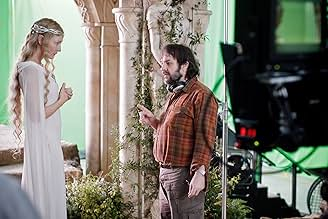
A Quest for Home
And yet, thanks to the prologue presented by Ian Holm, we have no doubt about the importance of their mission. This is not just a treasure hunt, it is a desperate attempt to return a homeland to a people who have lived in exile for a whole generation. There is a special charm in the fact that Tolkien’s book, which at the beginning tells, it would seem, about small and even trivial things (Bilbo, this reluctant burglar, reluctantly sets off on a journey full of dangers), then rises to describe events of enormous scale, such as the decisive battle of the five armies. But, as is generally characteristic of Jackson’s interpretation of Middle-earth, we quickly understand Thorin’s place in the vast oral history of this world: in some ways he is Aragorn, in some ways Boromir. This becomes clear not only from the prologue, in which we see Erebor at the zenith of its glory and its destruction by Smaug, a vicious cross between a lizard and a bat (here he is shown in passing); the film also features an impressive flashback of Thorin’s hard-won and very short-lived triumph in the battle with Azog on the mountain slopes at the entrance to Moria.
Bilbo’s Transformation
The main question of the book is: why did Bilbo, a simple ordinary man and connoisseur of simple pleasures, agree to expose himself to such dangers? And why didn’t he give up when the adventure became truly extreme? This same question is raised in the film; moreover, it is the basis of the plot of “An Unexpected Journey.” “The Hobbit: Episode I” is the story of how Bilbo begins to consider this adventure his mission, how he comes to understand his own motives. The answer that Jackson’s team gives in their masterful, filigree script is simple to the point of elegance: the hobbit, who wants only one thing – to find himself back in his native burrow, suddenly realizes that it is his duty to help the dwarves return to their homes.
Martin Freeman as Bilbo
Martin Freeman flawlessly embodies this idea: the choice of actor for the role of the old-fashioned halfling turned out to be perfectly accurate. There is not a single character in Tolkien’s chronicles who even remotely resembles Bilbo. Although many may disagree, he is the strongest hero of the saga: a simple, decent, and respectable, albeit somewhat conservative, little man, drawing his ingenuity from a deep well of his own inner strength. He is not torn by internal problems like Frodo, he is not unresponsive like Samwise, and he is not comical like Merry and/or Pippin. “I am not a hero or a warrior,” Bilbo asserts. He is us, and Freeman demonstrates this perfectly, without grimaces or winks. His Bilbo takes his own troubles quite seriously, and although “An Unexpected Journey” is currently the most fun (and sometimes the most ridiculous or the funniest, but certainly the most childish) of all the Middle-earth films, emotionally, Freeman is its main figure.
The Riddles in the Dark Scene
The most impressive scene in the film is the game of riddles in the dark. Here, Andy Serkis’s Gollum, another of the saga’s strongest characters (although many will again disagree), reappears for a while. To see motion capture master Serkis in this role again and to watch how brilliantly this famous episode is recreated through the prism of Smeagol/Gollum’s split personality is a joy and delight, and yet the pinnacle and turning point of the entire narrative is the episode in which the invisible Bilbo, standing over Gollum and holding his sword to his throat, gives him life. Jackson keeps Freeman’s face in the frame, and this is not just Tim from “The Office” and not Dr. Watson with pointed ears. This is an actor at the peak of his craft, revealing every minute detail of the character, whom he now seems to have been destined to play.
The Visuals: 48 Frames Per Second
And finally, what about another embellishment – the film’s historical visuals? 48 frames per second is, as they say, something else. And understand it as you like: on the one hand, the clarity of detail is almost overwhelming, whether it’s the seam on Gandalf’s hat or the scab-covered growth hanging from the hideously swollen muzzle of the Great Goblin (Barry Humphries). However, on the other hand, the lack of graininess and blur in motion strangely makes the film less epic – everything is perceived so directly and even intimately that the distance between the auditorium and the screen practically disappears. As a result, the action may seem even more exciting to you – or vice versa, the spectacle will decrease, since the film’s quite natural dependence on the scenery will appear in a less flattering light. Keep this in mind when deciding whether you need these additional impressions.
Final Verdict
Although the film is partly about a hidden (literally) threat, fortunately, it is nothing like “Episode I: The Phantom Menace.” “The Hobbit” is lighter than “The Fellowship of the Ring” and its sequels, its characters look younger, but it will not disappoint fans of “The Lord of the Rings…”.
Martin Freeman’s Bilbo is so good that the future trilogy may well be on a par with the existing one. A real treasure.